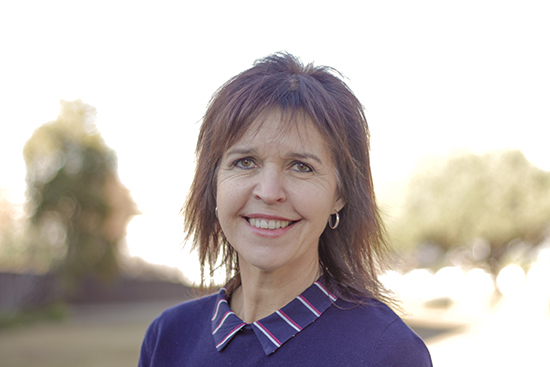Latest News Archive
Please select Category, Year, and then Month to display items
27 August 2018
Photo Barend Nagel
 Arina Engelbrecht’s vision is for all Kovsies to lead holistically healthy lives.
Arina Engelbrecht’s vision is for all Kovsies to lead holistically healthy lives.
How do you start living a healthy lifestyle? Arina Engelbrecht, a wellness specialist in the Employee Wellness Division at the University of the Free State (UFS) says it only takes a few changes. Her passion is to motivate people to live a balanced life.
Being active enables a person to live life to the full. “Aim to exercise 150 minutes a week, which equates to 30 minutes five times a week in order to experience health benefits like prevention of lifestyle illnesses, better sleeping patterns, decreasing stress or anxiety and feeling more energetic,” says Engelbrecht.
Some of the initiatives Engelbrecht and her team drive are the Healthy Lifestyle Challenge, Park Runs in Bloemfontein, and the Healthy4Life Pedometer Challenge, which encourage staff members to become more physically active. “Everything we do, think or feel is influenced by what we eat! It is therefore important to eat a balanced diet. Healthy food = quality fuel = good health = sustained energy = peak performance,” she explains.
Pedometer Challenge
In the space of eight weeks 240 staff members from all campuses walked 54 000km as part of the Pedometer Challenge. Engelbrecht and her team mobilised 53 active teams from all three campuses. Three of these teams emerged as the winners as they exceeded the target of 1 300km which is the equivalent of walking to Cape Town. In September 2018 the Challenge is going national as the North-West University competes against UFS.
Celebrating women
This Women’s Month Engelbrecht’s message to women of Kovsies is: “We must start embracing who we are and start believing in ourselves, whether it is in the workplace, in business, or at home.”
Photo manipulation in journalism: evil, crutch or lifebuoy?
2017-09-04

Albe Grobbelaar, veteran journalist and lecturer in the
Department of Communication Science at the UFS.
Photo: Rulanzen Martin
Since the 1800s the manipulation of photographs has been common practice, and who can forget the OJ Simpson Time magazine cover in 1994? Albe Grobbelaar, lecturer in the Department of Communication Science at the University of the Free State (UFS), asked in a special lecture on 18 August 2017 whether “Photo manipulation in Journalism” was an evil habit, a crutch or a lifebuoy.
“As a journalist I have always been interested in photography. And the principle of photo manipulation or tampering with photos, as we call it, is something that has interested me ever since,” Grobbelaar said. Photo manipulation is an area that has garnered many academic interest and is not a new trend but a practice that started in the 1830s when photos came into popular use. “It is not always done with ulterior motives, artists played with photographs to get unique effects.” Photo manipulation is not only to create fake news, but is sometimes used to convey novelty and create shock to news readers.
Different viewpoints for different circumstances
He talked about the spectrum of viewpoints on photo manipulation. Some conservative journalism schools say photos should never be retouched while other feel it is fine to tamper with pictures. “What I tried to convey in the lecture was that one should consider different circumstances differently,” Grobbelaar said. As a journalist he believes that news photos should never be manipulated.
He mentioned the example of the mugshot of OJ Simpson that the Los Angeles Police Department released to the media. “Newsweek and Time both used the photo on their front pages, but Time deliberately darkened the picture so that OJ, a black man, would appear more sinister,” Grobbelaar said. It is, however, common practice in the fashion industry to retouch images that are used in fashion magazines.
Use own judgment to validate photos
In the age of social media it has become easy to manipulate photos and which has been labelled fake news. “I would advise people to use their own judgment when validating the authenticity of photos,” Grobbelaar said. It is important to verify whether they are from a reliable news outlet.